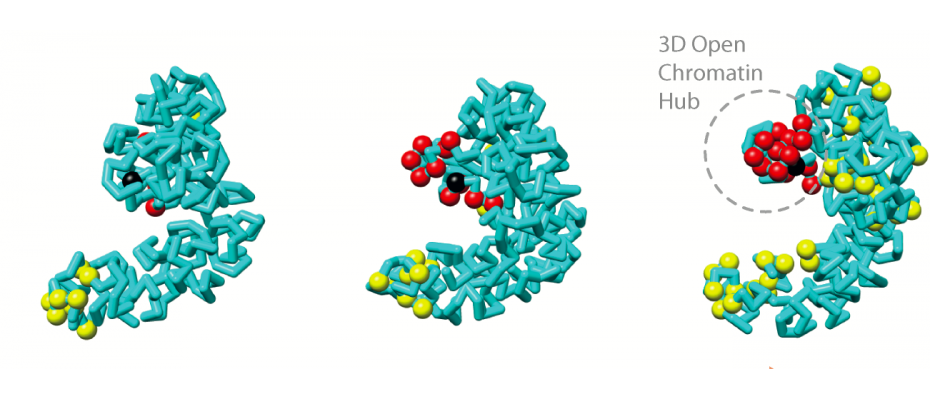
BCN, 29 May 2020.- The way in which chromosomes occupy a 3-D space is crucial for regulating genome function and processes essential for life, such as DNA replication, transcription and DNA-damage repair.
In the past few years, technological advances have revealed much about how genomes organize themselves, improving our understanding of how genes are expressed and providing new insights for cell development and disease.
However, much of this knowledge is based on static pictures of genomes, which provides a limited view of a highly dynamic environment. Now, scientists at the CNAG-CRG and CRG have developed TADdyn, a tool that can generate movies of how genomes change over time. The findings have been recently published in Nature Communications.
“We can now create simulations that mirror the actual dynamic events going on inside the nucleus as close as possible. There are no other experimental techniques available today that can make these type of observations at this resolution,” says Marc A. Marti-Renom, Structural Genomics Group leader at the CNAG-CRG and the CRG. “TADdyn will help researchers worldwide learn much more about the direct relationship between structure and function in the genome.”
The researchers tested TADdyn’s function in white blood cells, studying changes in 21 different areas across the mouse genome. The movies showed that gene activation correlates with the appearance of ‘cage-like’ structures enriched with active chromatin, which the researchers call 3D-enhancer hubs.
The authors conclude that these 3D-enhancer hubs of open and active chromatin may constitute a general feature to trigger and maintain gene transcription.
Work of reference











